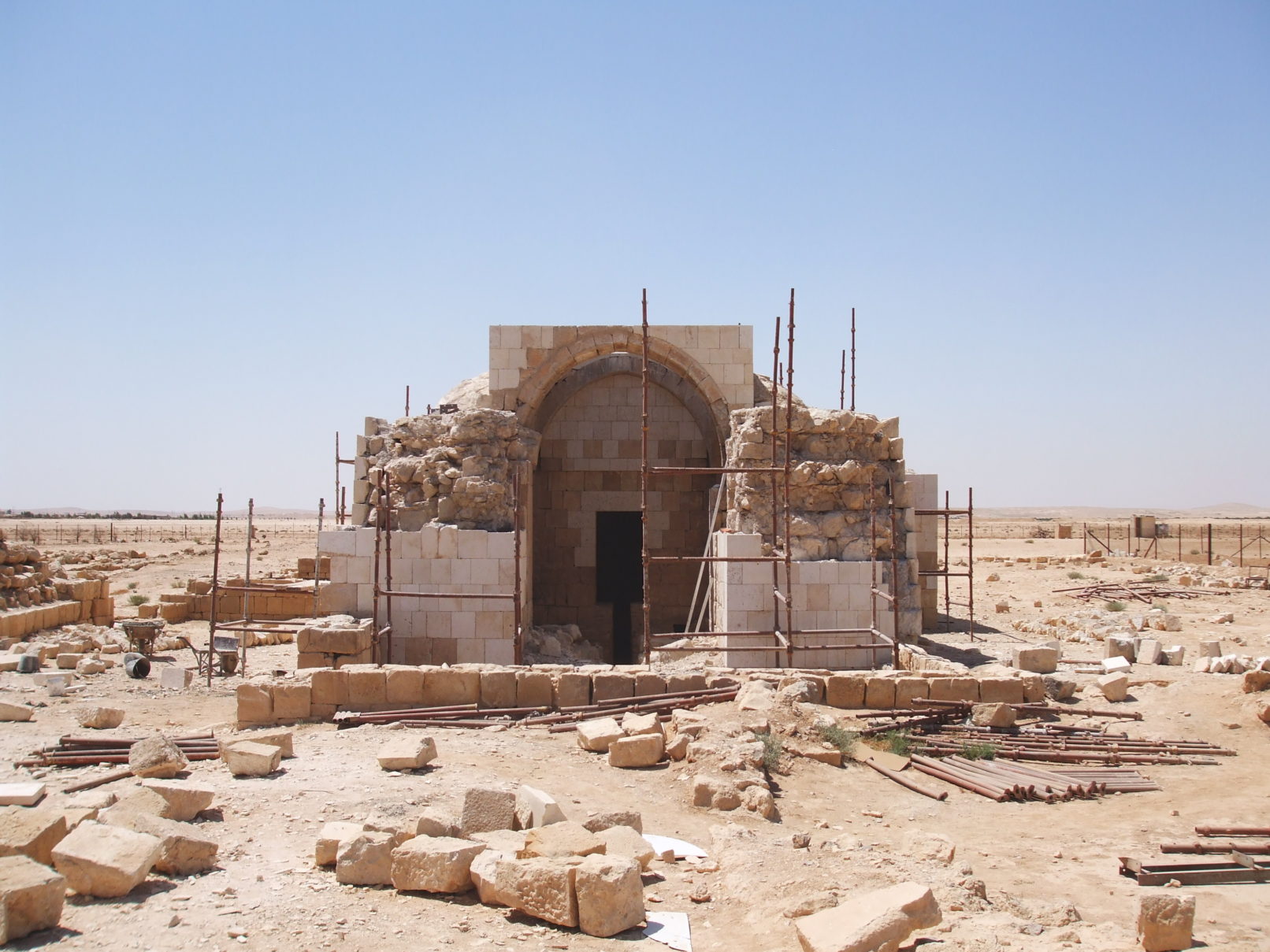Qasr al Hallabat is a town in the Zarqa Governorate of north-western Jordan, north-east of the capital of Amman.[1] The town is named after the Umayyad desert castle located there. To the east of the castle stands the associated bath house of Hammam as-Sarah.
During the Umayyad dynasty, nobles and wealthy families erected small castles in semi-arid regions to serve as their country estates or hunting lodges. For the Ummayad aristocracy, hunting was a favoured pastime and these desert castles became important places of relaxation and entertainment. In Arabic, these desert castles are known as qusur. They were often built close to a water source or adjacent such as a natural oasis, and frequently sited along important trading routes, such as the ancient trade routes connecting Damascus with Medina and Kufa. Qasr Burqu’ is one of the earliest examples of a desert castle.
The construction of a qasr typically followed a standard template; the main castle was a rectangular stone structure with an elaborate entrance and other buildings in the complex would include a hammam (bath house), a mosque and walled enclosures for animals. The complex also included a water reservoir or dam. The interior rooms of the main castle were ornately decorated with floor-mosaics, frescoes or wall paintings featuring designs that exhibit both eastern and western influences. Most of the desert palaces were abandoned after the Umayyads fell from power in 750, leaving many projects incompleted and others were left to erode.
The ruins of these desert castles can be found across the Middle East. While the majority of qasr are situated in modern day Jordan, several qsar are located in Syria, the West Bank and Israel, either in cities (Jerusalem, Ramla), in relatively green areas (Al-Sinnabra, Khirbat al-Minya), or indeed in the desert.

